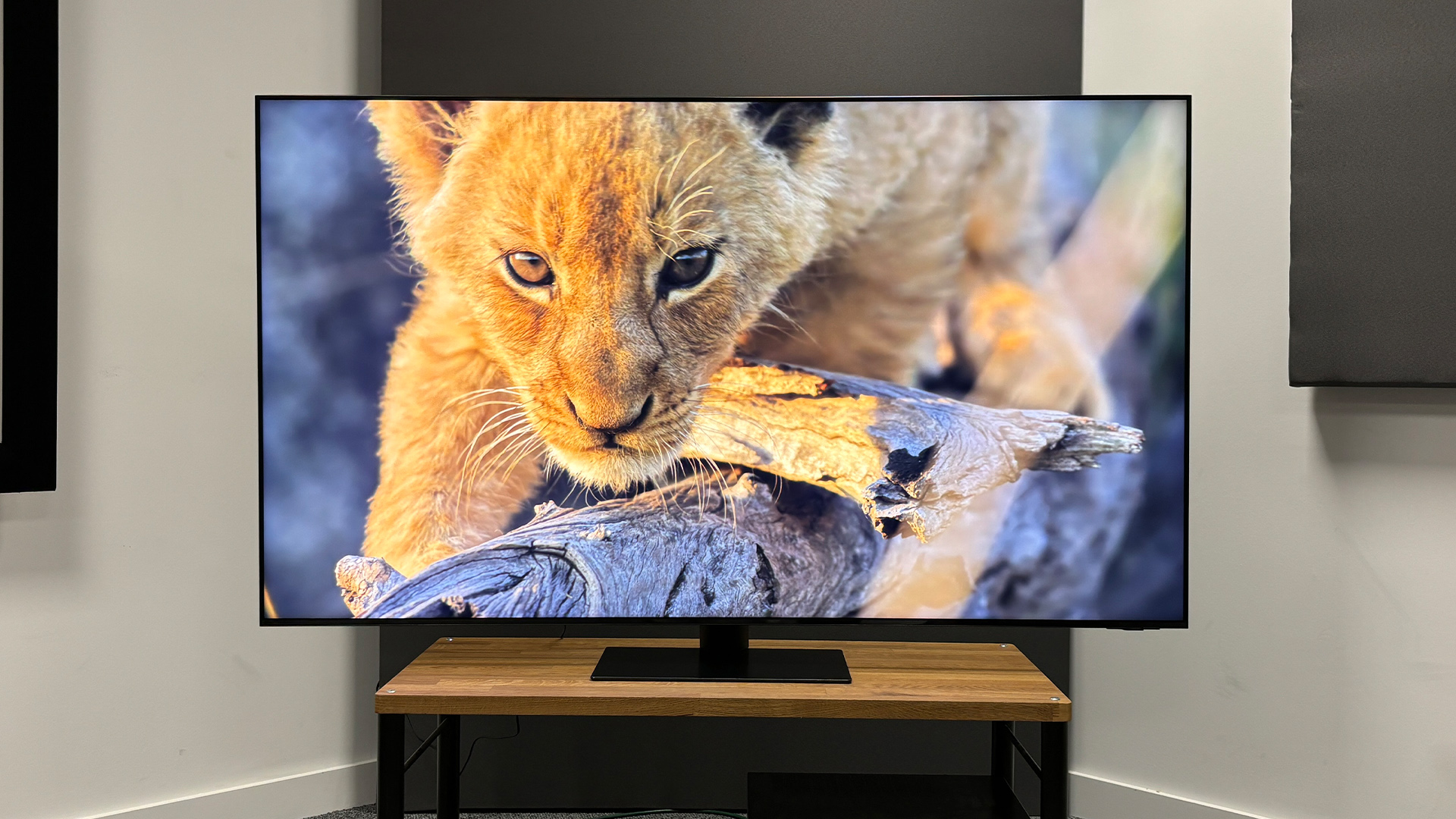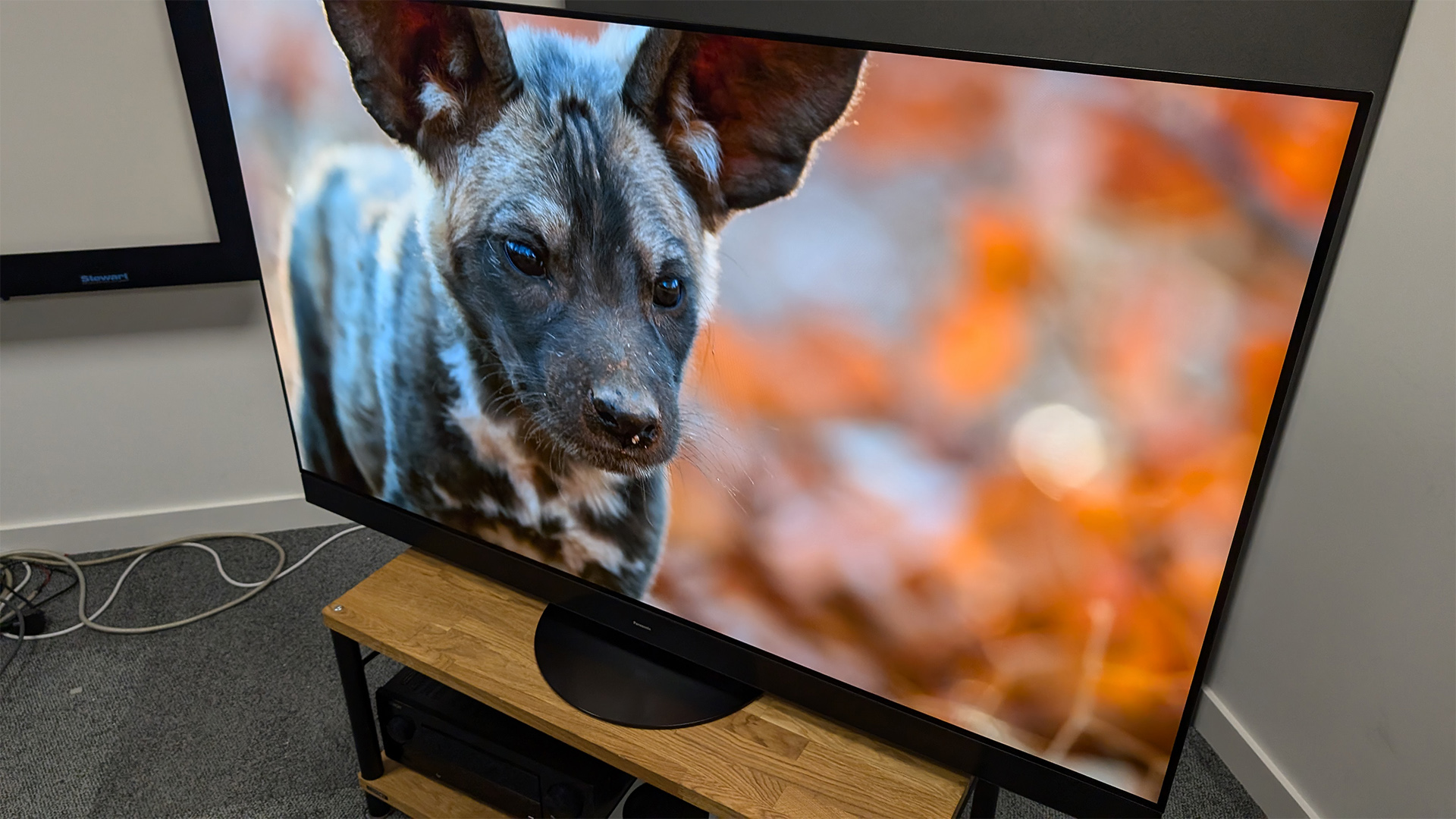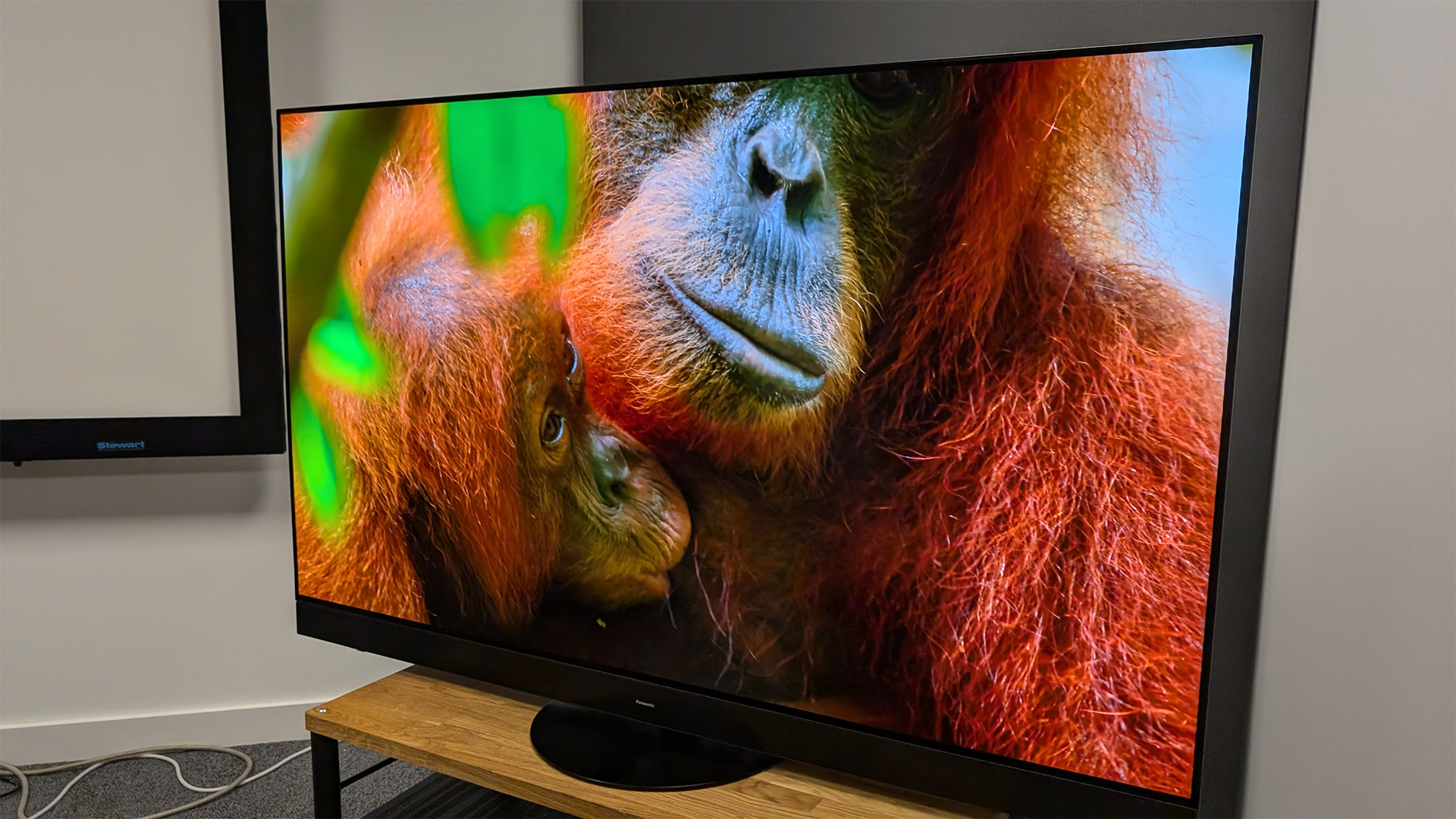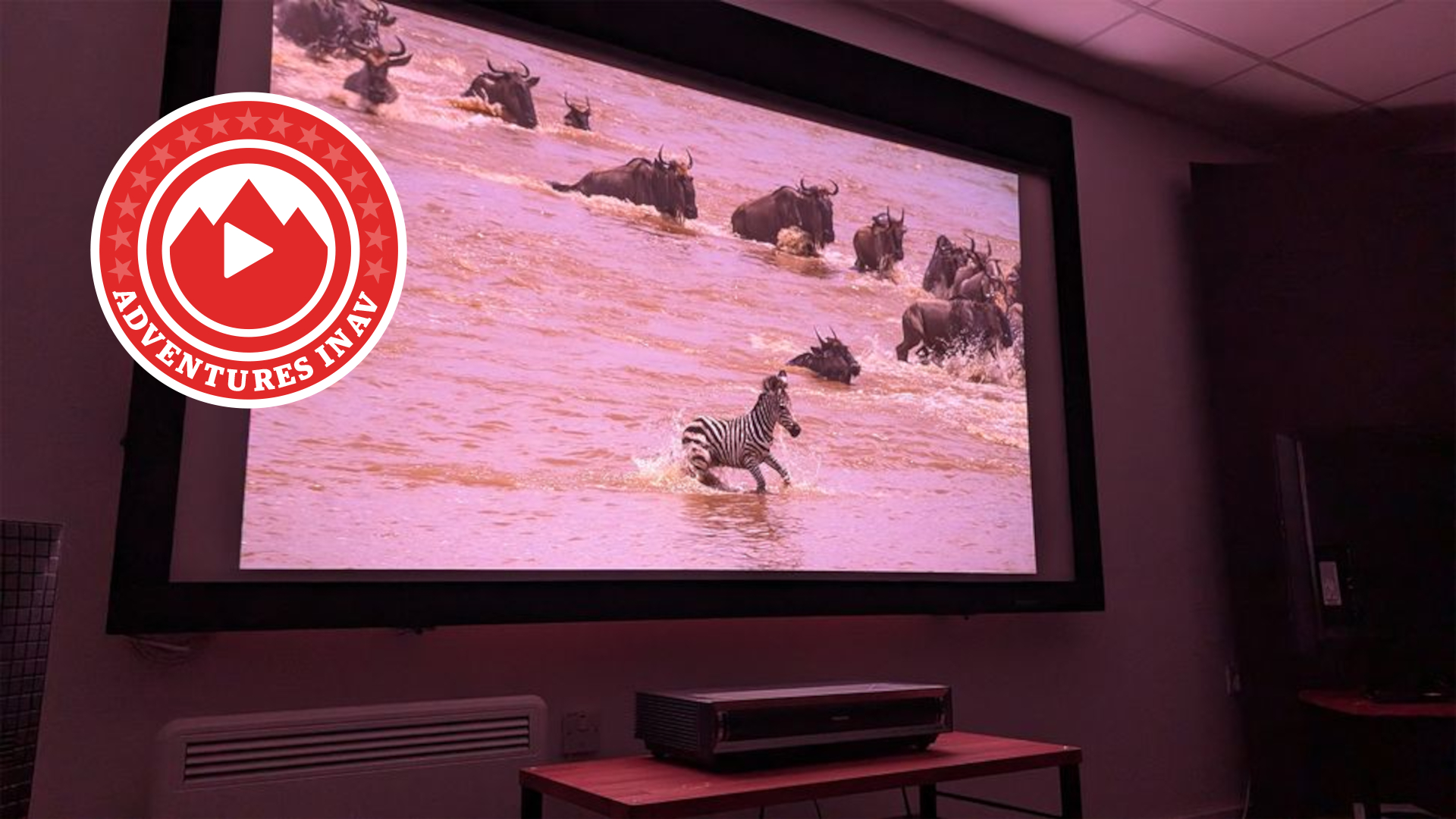What is upscaling on TVs?
What is upscaling, how does it work and is it worthwhile?

As TVs have got larger and resolutions have increased, manufacturers have been very keen to promote the benefits of upscaling, which in its crudest terms is a method by which a lower-resolution image is converted to match a higher-resolution display. The advent of artificial intelligence (AI) has only boosted the supposed wizardry of upscaling, with brands claiming it will allow you to get the most out of your new 4K TV or 8K TV. But what is upscaling, how does it work, and is it really worthwhile?
Read on to learn everything you need to know about upscaling.
What is native resolution?
Before we give you the full lowdown on upscaling, you should understand what is meant by 'native resolution'.
Standard definition (SD) TV and DVD has a native resolution of 480 lines if you’re in an NTSC territory, and 576 lines for countries that use the PAL format. Both are composed of an interlaced signal, meaning that half the lines are shown and then the other half, and thanks to the persistence of vision your brain combines them into a single image. These formats started as analogue, but in digital terms the respective resolutions equate to 720 x 480 pixels and 720 x 576 pixels.
The introduction of high-definition (HD) TV saw the arrival of two new resolutions: HD (1280 x 720) and Full HD (1920 x 1080). While HD isn’t used that much these days, Full HD is the resolution for a lot of broadcasting and streaming, along with Blu-ray discs. Initially, HD broadcasting was either 720 progressive or 1080 interlaced, although all video streaming and Blu-rays use a progressive signal. This has full fields for each frame as opposed to interlaced signals that combine two half fields.
In the last decade, we’ve seen the introduction of Ultra High Definition (UHD), which also has two resolutions: 4K (3840 x 2160) and 8K (7620 x 4380). Both of these formats are delivered as a progressive signal. 4K is used for some broadcasting, a lot of streaming on Netflix, Disney+, Apple TV+ and the like, and Ultra HD Blu-ray, whereas 8K is mainly limited to broadcasting in Japan and some videos on YouTube.
What is upscaling?

In its simplest terms upscaling is a method by which a device converts a lower-resolution image to match a higher-resolution display. In the case of TV viewing today, that's most commonly a Full HD image to a 4K display.
It does this through a process called ‘interpolation’, which is best described as educated guessing. While it might be a still image that’s being upscaled, it’s more likely to be a moving image where video is concerned. This obviously adds to the complexity as the upscaling is both guessing what the image is and where it’s moving to.
Upscaling isn’t magic – despite what some TV manufacturers may claim. To put it bluntly, you can’t add what isn’t already present in the source image, no matter how much processing you apply. It isn’t like the movies where someone enhances an image and suddenly there’s all this extra detail. That’s not to say upscaling isn’t effective at times, but there needs to be a degree of expectation management that’s often missing from the marketing claims of some brands.
How does upscaling work?
The earliest example of upscaling was called ‘line doubling’ and basically involved combining two interlaced fields to produce a single progressive frame, thus creating a 480p or 576p signal. The arrival of high definition saw the introduction of the first upscalers that would add additional lines to convert standard definition to 720p or 1080p, depending on the resolution of the display.
In today’s digital realm, however, it’s all about the pixels, and modern upscaling will map lower-resolution content to the native resolution of a display by interpolating additional pixels.
For example, a standard definition PAL image is composed of 720 x 576 pixels, or 414,720 pixels in total. To show this image on a native 4K TV you need to expand the pixel count to that TV's pixel composition – 3840 x 2160, or 8,294,400 in total. That’s a massive difference in pixels and the TV’s upscaling needs to fill in the blanks. Or, to put it another way, when upscaling standard definition to 4K it has to make up 95 per cent of a moving image – that’s a whole lot of guessing.
To upscale lower-resolution content, an interpolation algorithm is used to analyse the existing pixels in the image and then extrapolate additional pixels around them. The more sophisticated algorithms can analyse what the image is and minimise unwanted artefacts to produce a cleaner picture. This is particularly important with very low-resolution or heavily compressed content.
The more pixels in the original content that an upscaling algorithm has to play with, the better the results, which is why a high-quality Full HD source can look very good when upscaled to 4K. However, if you then compare that upscaled image to the same one in native 4K, you’ll notice much more fine detail in the latter. Again, you can’t add what wasn’t there to begin with.
Does using a higher-resolution display make a difference?

In the same way that a higher-resolution source can result in better upscaling, a higher-resolution display can also deliver improvements in upscaling. Once again, while the TV can’t add detail that wasn’t present in the original source content, it can use all the pixels in its native display to deliver better-defined images with less pixelisation or motion artefacts.
A 4K display has four times the resolution of a Full HD display and thus has four times as many pixels to use when upscaling. As a result, lines and edges are reproduced with greater precision, eliminating stair-stepping artefacts on angled lines or blurring around moving objects.
These days more and more content is available in native 4K, especially streaming services and Ultra HD Blu-ray. This means 4K TVs need to upscale less content, although as the majority of TV channels are still broadcast in standard definition, it does remain an important feature.
However, on an 8K TV upscaling is a vital feature because there’s virtually no native 8K content and thus everything you’ll be watching is upscaled. Fortunately, the upscaling algorithms in 8K displays have over 33 million pixels at their disposal, so a high-quality 4K source can look stunning on them. It’s a bit trickier with standard definition content as in that case an 8K display’s upscaling is interpolating over 98 per cent of a moving image.
Can AI make upscaling better?
The advent of AI-enhanced processing and advanced neural networks with machine learning has certainly resulted in some of the best upscaling ever seen. These days manufacturers literally teach an AI what various things look like using a database of pictures, which is then applied to the upscaling, allowing the algorithm to differentiate, say, a cat from a tree in the original image. It’s still guessing but it’s highly educated guessing.
Once again, you can’t add what wasn’t present to begin with, but the more data and pixels the upscaling has to work with, the more impressive the results. The increased processing power also adds value when upscaling moving objects, helping to eliminate blurring, ghosting or distortions. As screens get bigger and bigger, this kind of AI-enhanced upscaling will become more important.
The same goes for eliminating compression artefacts such as banding and macro-blocking, although with lower-resolution content the image will still look soft. To address this, many manufacturers apply sharpening and contrast enhancements to give the images more visual punch. Just be careful with sharpening because, as with upscaling, you can’t add what isn’t there, and sharpness features apply fake edges to objects to make them appear more defined. If applied too aggressively, this can result in ringing around those objects.
So, ultimately, upscaling is a valuable tool that ensures everything you watch is mapped to the native resolution of your TV and displayed in the best possible quality. Just don’t expect miracles.
MORE:
Best TV 2024: flagship OLEDs and affordable flatscreens tried and tested
OLED vs QLED: which is the best TV technology?
Get the What Hi-Fi? Newsletter
The latest hi-fi, home cinema and tech news, reviews, buying advice and deals, direct to your inbox.
